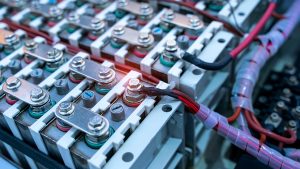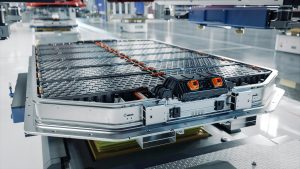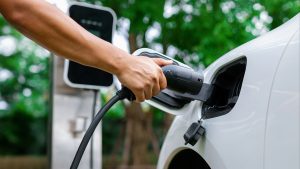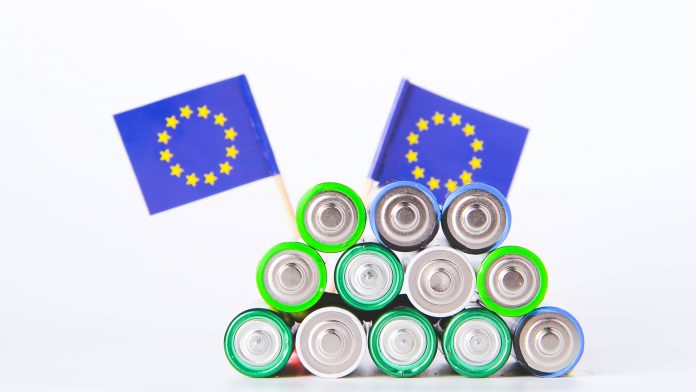Jack Thomas, Managing Editor at Innovation News Network, spoke to Thore Sekkenes, European Battery Alliance Programme Director, about the work of the organisation in the European battery industry and the outlook for the region’s clean energy future.
The European battery industry is growing. As the world shifts towards electrification, the availability of efficient batteries is becoming an increasing issue.
To address this challenge, the European Commission launched the European Battery Alliance in October 2017. A domestic battery value chain must be established for Europe’s clean energy transition to take shape, and the EBA will help to achieve this.
Here, Jack Thomas, Managing Editor at Innovation News Network, spoke to Thore Sekkenes, European Battery Alliance Programme Director, about how the EBA is boosting the European battery industry and the current issues that must be overcome to promote even further growth.
The European Battery Alliance has been pivotal in growing the European battery industry. What services do you provide to facilitate this growth?
We provide services in many different shapes and forms. First, we have the EBA network, where we organise events for our members. Our members include around 900 different companies, universities, and investors.
We deal with the whole value chain from mining to battery recycling – this is fundamental because we can help connect members across the sector.
Because of our InnoEnergy heritage, we have contacts in Brussels and with Member State governments. EIT is almost always involved when we arrange events to assist with the connection to the authorities.
We aim to spread the word from the government, for example, on implemented rules. We also spread information from our members to governmental entities.
The European Battery Alliance is a small group, so we help companies as much as we can and invite people in industry to events.
What sustainability issues does outsourcing raw materials cause?
It is a concern and one of the reasons why we want to localise battery production here in Europe. To add context, it is not likely that in the near future we will be able to source all our raw materials from Europe to grow the European battery industry. This means that we will have to continue to trade with other countries where it is easier to get this raw material.

To mitigate the issues surrounding this, there is a solution called a battery passport. The digital product passport for batteries ensures the traceability of the raw materials and the products that go into the battery. It also ensures that these products are in accordance with European regulations. The passport allows for the product history to be tracked.
This is set to be implemented on a regulatory level and is going to be in place in a couple of years.
There is a consortium of industry partners, institutions, and regulators working on this.
There is a benefit and a business value to the battery passport because we are aggregating data from the supply chain as well as its use cases. We will be able to develop a database that is good for business but also for Europe to keep track of how the batteries are used.
Currently, we are in the document phase, and we are involved in this work.
Why is Europe not currently mining enough raw materials to meet demand?
Europe has more than enough material; the problem is the lack of mining. This comes down to the issue of permitting. For a long time, the government has dismissed mining and believed that it should be done outside of Europe.
This is a problem because there are opportunities if we change our mindset and start mining again.
We have to get started and get the permitting process in operation. If there wasn’t a problem with public perception, the approval process would run much faster.
The problem is that a lot of bad things were done in the past – a lot of mining was done in a non-responsible way.
We must respect this and ensure that the local community are comfortable. To build the European battery industry, we must convince people that mining will be done in a correct and responsible way.
Is enough work being done to change public perception?
I will illustrate this with a number of examples. In Serbia, the community was not involved early enough, and they received bad dialogue, which blocked the particular mine.
On the other hand, the Keliber mine in Finland, for example, has a communication plan with the people around the area and has received support.
Fundamentally, a communication plan with the people who are affected needs to be developed. It is about increasing transparency and engaging the local community.
How should the EU ensure that there are enough critical raw materials to boost the European battery industry?
There are four things you can do. First, do more mining and extract more material.
Second, be more efficient with the minerals – get better technology and EV motors that waste less material.
Third, we must recycle. This will not get us out of the problem as we increase the need for critical raw materials, however. This is because the number of batteries scrapped is not enough to feed the increasing demand.
Finally, we need to utilise new technologies that use other materials – for example, sodium-ion batteries which contain no materials that are scarce.
Why do you think sodium-ion batteries are under-utilised?
Compared to sodium, lithium is a better material to use in a battery. The sodium-ion battery will have less energy per kilo than lithium-ion. If you have a high-performance car where you can drive 1,000 kilometres, for example, the lithium battery will be used for a long time.

Sodium batteries would have to be twice as big, which causes problems. For smaller cars, sodium-ion batteries could be a solution.
Now, since electric cars started in the high-end, where performance is the biggest driver, we started with lithium.
As we go into cars that are smaller, perhaps that you drive around town and you can charge every day, then sodium-ion batteries will be much more advantageous to use. The focus is shifting toward this, but we will have lithium-ion batteries for a long time still.
We will be making lithium-ion batteries for a long time, and the question is, how do we reduce the need for these materials? Sodium-ion is one of the answers.
How would you assess current recycling efforts in the European battery industry?
There are many initiatives, but the business case is not settled yet. There are different ways of doing it, and it’s not clear exactly how that is going to be done.
One simple question is, who owns the battery? Is the owner of the car the owner of the battery and responsible for recycling it? This is a question that is important for business.
You can say that the battery manufacturer is the most suitable entity to own the battery because they want it back for recycling. However, the business case for this is not clear.
The second aspect is that electric batteries last longer than previously thought. At the beginning of the EV era, we thought that a car would replace its batteries once or twice during its lifetime.
Now, we see that the battery outlasts the life of a car.
There aren’t that many used batteries to recycle yet. Most of the recycling now is using production scrap – scrap that comes out of production because the battery is not working, or recalls of batteries that have some quality defect, for example.

This will be the case for several years as we haven’t had EVs for that long. Nevertheless, it is fundamental to ensure that the recycling process is up and running so that the European battery industry can remain sustainable.
We need the raw material, and the energy transition is occurring for a reason – to become cleaner.
The recycling industry is diverse and has many good initiatives, but it is unclear how it is going to work yet.
When the first batch of EVs gets ready for recycling, will the infrastructure be in place?
I hope so, but my first concern is extracting the raw material, then we should focus on the recycling part of the value chain.
In a not-so-distant future, the path to the future will be a lot clearer on recycling infrastructure. Right now, there are not that many used car batteries out there that need recycling.









